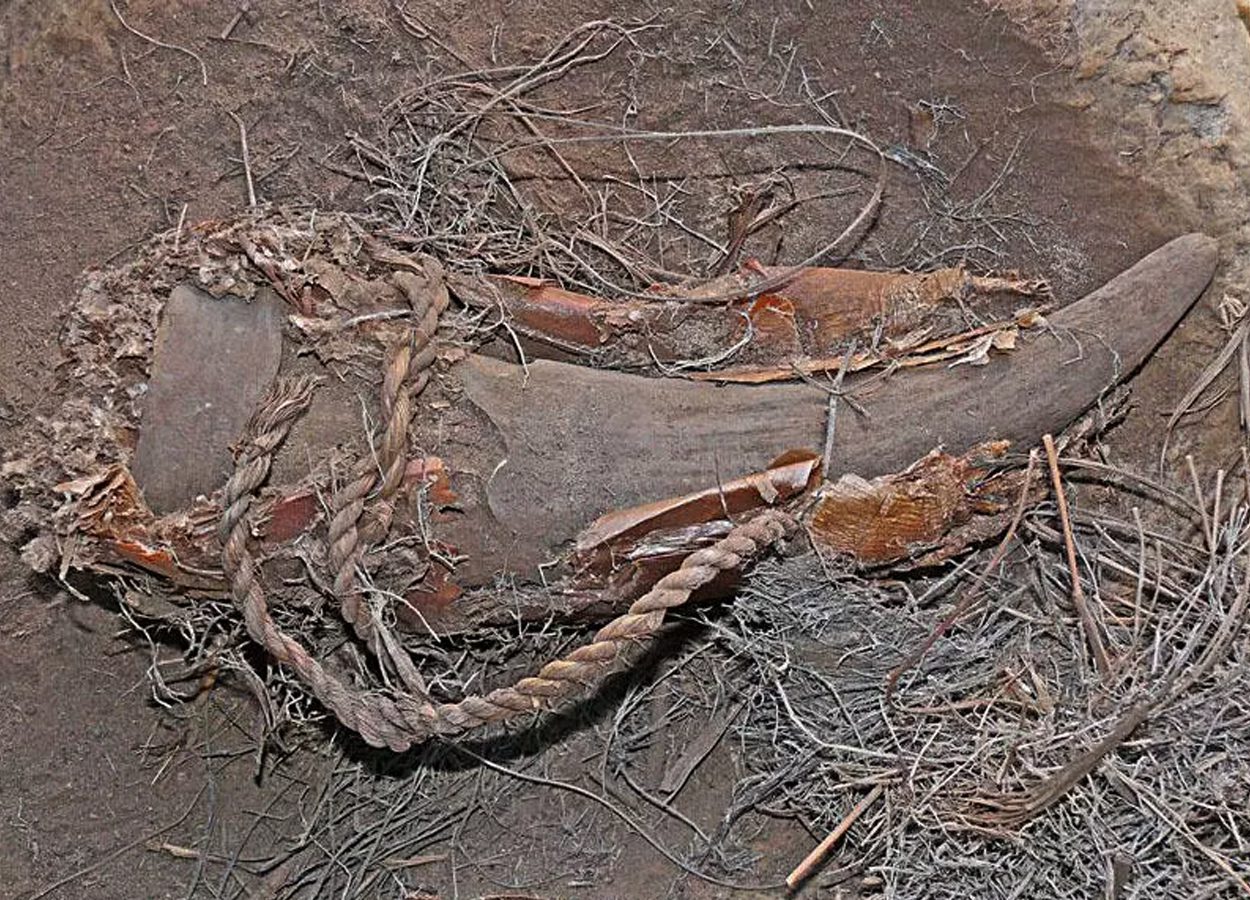A study of a cattle-horn used a medicine container, has been revealed to contain herbal mixtures used by the Khoi or San people 500 years ago.
The container was discovered in the La vie D’Antan rock shelter, located in the Langkloof mountains of South Africa. The rock shelter contains up to 30 paintings in varying shades of red and yellow ochre-based paint across the width of the overhang, depicting human figures with hunting equipment, animals such as antelope, as well as human handprints.
Cattle-horns have been traditionally used as medicine containers throughout the continent of Africa, although in South Africa, tortoise shell and ostrich eggshell are generally more common.
The La vie D’Antan cattle-horn is capped with a rawhide lid and was wrapped in a bundle of Boophane disticha leaves and grass, secured with a twisted plant fibre rope.
A chemical analysis of micro-residues taken from dry scrapings of the horn contents was conducted by using gas chromatography-mass spectrometry (GC-MS). The results of the study revealed that the horn contained plant-based medicinal compounds, of which mono-methyl inositol and lupeol are the most prevalent.
Mono-methyl inositol occurs in several traditional medicinal plants found throughout the Langkloof mountains, including Sutherlandia frutescens, Cyclopia intermedia, Lotonius laxa and Clitoria ternatea. Sutherlandia frutescens has strong antioxidant properties and was used by the Khoi people for washing wounds and treating fevers and eye infections.
Lupeol also occurs in several medicinal plants found in South Africa, including Ficus cordata, Asteracantha longifolia and several different Euphorbia species. Lupeol is known for its anti-inflammatory and antimicrobial properties and has more recently been used in cancer treatments and antimalarial research owing to its antioxidant properties.
“Radiocarbon dating of a sample of the leather-capped horn places it in use between 1461–1630. To the best of our knowledge, the horn container from La vie D’Antan is the oldest medicine container yet found in southern Africa,” said Justin Bradfield, from the University of Johannesburg’s Palaeo-Research Institute.
“Although we were unable to verify the contemporaneity of the horn and its contents, we consider it unlikely that the horn would have been handed down for more than two or three generations (or 40–60 years). The parcel seems to have been deliberately placed in the rock shelter with the intention of leaving it there for some time,” added Bradfield.
https://orcid.org/0000-0002-6139-6227
Header Image : CC BY 4.0







